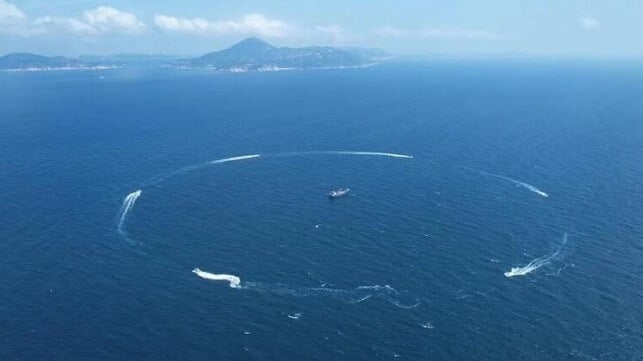Chinese Firm Develops Swarming Drones to "Besiege and Expel" Vessels

Chinese firm Yunzhou Tech has deployed its unmanned surface vessels for many purposes over the past ten years - water sampling, public light shows, oceanographic research, security patrols - but it is preparing to take its technology to a new level for national security missions. Yunzhou is working on swarming technology that would allow multiple drones to engage in "cooperative confrontation" with undesired surface vessels in order to "besiege and expel" them, according to the Chinese Communist Party outlet Global Times.
Yunzhou Tech is China's first and most successful autonomous-vessel company. From its original business in water-quality monitoring drones for rivers and lakes, it has expanded gradually into near-shore unmanned security boat and research boat products. The new swarming system would weaponize these capabilities and put them to use for China's "maritime development and rights protection" efforts, guarding "Chinese sea territory," according to Global Times.
The drones are intended to share sensor data, track target vessels at high speed, conduct intercepts and "expel" intruding vessels. They are capable of autonomous decisionmaking as a group, according to Global Times.
Yunzhou Tech has been designing software for coordinating drone swarms for civilian purposes for years, and it set a world record for the largest swarm (56 boats) in 2018. The new "confrontation" mode is still under development.
The U.S. Navy has experimented with swarming surface craft since at least 2014, when its Swarm I program tested out the potential for one operator to control five networked, autonomous unmanned surface vessels. In 2017, a separate program run by Johns Hopkins' Applied Research Laboratory developed a comparable system for autonomous, high speed swarming operations of six midsize RIBs at up to 35 knots. It was the first time that six autonomous vessels had "swarmed" together at tactically relevant speeds, according to Jim Horris, APL program manager for Autonomy Test and Evaluation.
